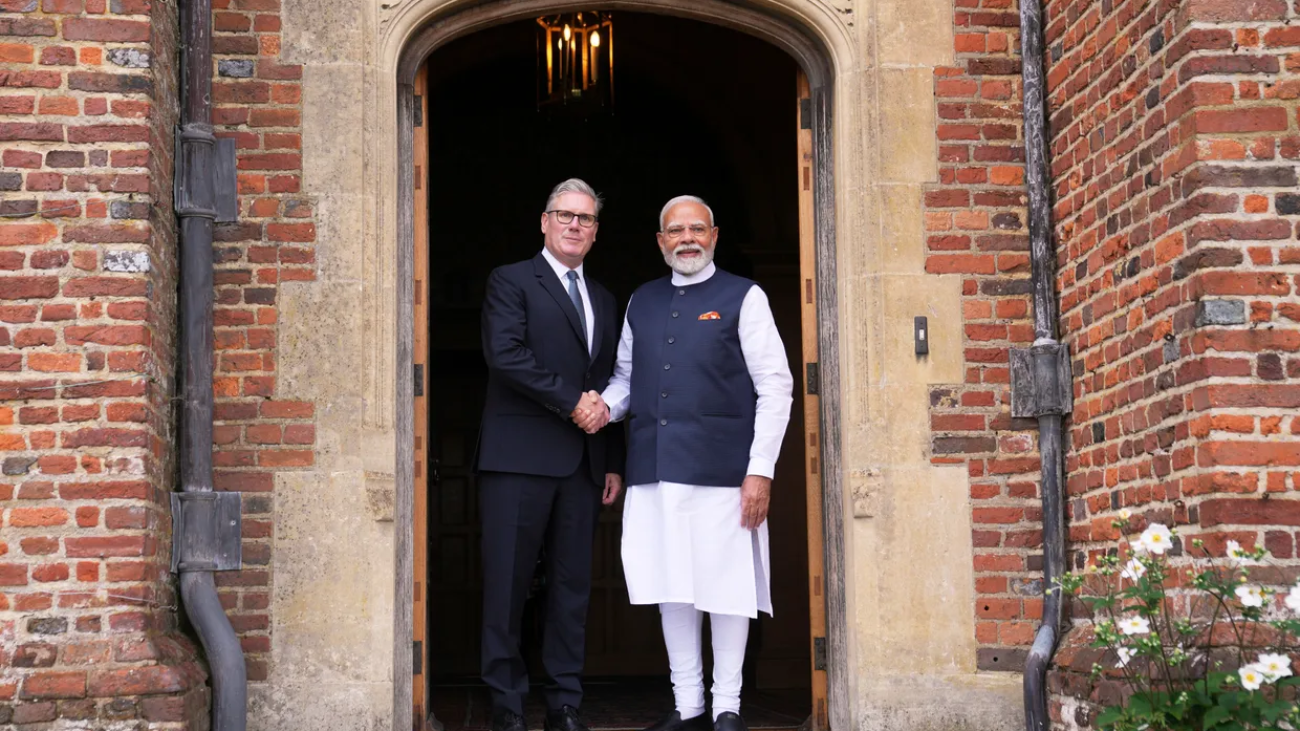As global trade dynamics continue to shift in the post-pandemic and post-Brexit world, the India–UK Free Trade Agreement (FTA) has emerged as one of the most anticipated trade negotiations globally. Both India and the United Kingdom are working diligently to finalize this landmark deal, aiming to strengthen economic cooperation, enhance market access, and deepen strategic ties. In this blog, we will explore the significance, key components, challenges, and long-term implications of the India–UK Free Trade Agreement.
📜 Background: Why the FTA Matters
The foundation for the India–UK FTA was laid after the UK’s exit from the European Union in 2020. No longer bound by EU trade rules, the UK has been aggressively pursuing trade pacts with key global economies. India, on the other hand, is focused on expanding its global trade network to boost exports and attract foreign investment.
India and the UK already share a strong historical, cultural, and economic relationship. According to the UK’s Department for Business and Trade, bilateral trade between the two countries stood at over £36 billion in 2023. A well-structured FTA could significantly raise this number, unlocking new opportunities for both economies.
🛍️ What is a Free Trade Agreement?
A Free Trade Agreement (FTA) is a pact between two or more nations to reduce or eliminate barriers to trade, such as tariffs, import quotas, and export restrictions. FTAs often go beyond goods and services, including provisions on investment, intellectual property, digital trade, labor standards, and more.
🧩 Key Objectives of the India–UK FTA
The India–UK FTA seeks to achieve several strategic goals:
1. Market Access
One of the primary objectives is to allow Indian exporters greater access to the UK market, especially for sectors like textiles, pharmaceuticals, IT, engineering goods, and agriculture. In return, UK businesses seek better access to India’s growing consumer base for scotch whisky, automobiles, financial services, and education.
2. Tariff Reduction
Currently, many Indian products face high tariffs in the UK and vice versa. For example, India imposes a 150% tariff on scotch whisky, which the UK wants to see significantly reduced. Similarly, India expects tariff concessions on its textile and leather exports.
3. Ease of Doing Business
The agreement aims to simplify regulatory hurdles, customs processes, and documentation requirements to facilitate smoother trade between the two countries.
4. Investment Promotion
Both sides are keen to use the FTA as a platform to encourage foreign direct investment (FDI), especially in areas like renewable energy, healthcare, defense, fintech, and infrastructure.
5. Skill and Talent Mobility
The UK is exploring pathways to allow easier movement of Indian professionals and students, particularly in sectors like tech, education, and healthcare.
🕊️ Strategic Significance
The FTA carries profound strategic importance:
- For India: It is an opportunity to diversify its export markets, reduce dependence on China, and gain a stronger foothold in Europe via the UK.
- For the UK: The deal represents a critical step in its “Global Britain” strategy post-Brexit and allows access to one of the fastest-growing major economies in the world.
🧱 Key Challenges in Negotiation
While the intent to finalize the FTA is clear, the path has not been without its obstacles.
1. Tariff Disputes
Negotiations have seen deadlocks over specific tariffs—particularly on automobiles, agricultural products, and alcoholic beverages.
2. Labor and Sustainability Standards
The UK emphasizes labor rights and environmental sustainability, while India seeks to protect its local industries from stringent compliance requirements.
3. Intellectual Property Rights (IPR)
The UK wants stronger IPR protections in sectors like pharmaceuticals and digital media, which India views cautiously due to public health concerns and generic drug access.
4. Mobility and Visa Access
India has pushed for greater visa flexibility for its IT professionals and students, while the UK remains cautious due to domestic immigration policies.
📈 Potential Economic Impact
A successfully negotiated FTA could bring substantial benefits:
- India’s exports to the UK could rise by $10 billion over five years, especially in labor-intensive sectors.
- Job creation in key Indian industries like textiles, jewelry, and IT services.
- UK companies could invest more in India’s growing digital and green economy, creating technology transfer and skill development.
- Consumers in both countries may benefit from reduced prices and greater product variety.
🔄 Current Status (As of 2025)
Negotiations for the FTA, which began in January 2022, have gone through 14 formal rounds. As of mid-2025, both countries have concluded most of the technical aspects of the deal, and a final political agreement is expected soon.
UK Prime Minister Rishi Sunak and Indian Prime Minister Narendra Modi have reiterated their commitment to signing the deal, ideally before the end of 2025, coinciding with growing momentum in UK-India strategic relations.
🌍 Long-Term Vision
The India–UK Free Trade Agreement is more than just a trade deal—it’s a strategic alliance in the making. With rising geopolitical tensions, economic uncertainties, and the global shift towards a multipolar world, this FTA represents mutual resilience, cooperation, and opportunity.
It also sets the tone for future negotiations between India and other Western economies, including the EU and Canada, while giving the UK a strong partner in Asia.
📝 Conclusion
The India–UK FTA is poised to be a game-changer, not only in terms of economic cooperation but also in redefining bilateral ties. As both democracies look to the future, this agreement will play a critical role in shaping a new economic order—based on openness, mutual respect, and shared growth.
If executed well, the FTA could become a model for similar North–South partnerships and show how two culturally rich and diverse nations can work together for a more prosperous future.

Leave A Comment